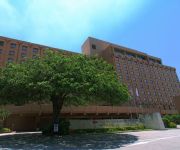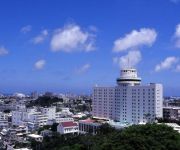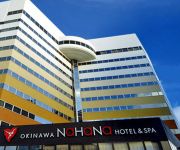Facts and Data
Webpages:
Official Unesco Page
Basis Data:
Unesco World heritage since: 2000
Size of heritage: 55 ha
- Buffer zone: 560 ha
Coordinates:
Longitude: 127,683°
Latitude: 26,209°
Summary
Five hundred years of Ryukyuan history (12th-17th century) are represented by this group of sites and monuments. The ruins of the castles, on imposing elevated sites, are evidence for the social structure over much of that period, while the sacred sites provide mute testimony to the rare survival of an ancient form of religion into the modern age. The wide- ranging economic and cultural contacts of the Ryukyu Islands over that period gave rise to a unique culture.
Location on Map
Show bigger map on Openstreetmap
Gusuku Sites and Related Properties of the Kingdom of Ryukyu
The Gusuku Sites and Related Properties of the Kingdom of Ryukyu is a UNESCO World Heritage site located in the Okinawa Prefecture of Japan. This site comprises nine historic castles and associated properties that were once part of the Ryukyu Kingdom, which existed from the 15th to the 19th century.
History
The Ryukyu Kingdom, also known as the Kingdom of Ryukyu, was an independent kingdom that flourished in the Ryukyu Islands, which are situated between Japan and Taiwan. The kingdom developed a unique culture influenced by both China and Japan, and it served as a crucial hub for trade and cultural exchange in the region.
The Gusuku Sites and Related Properties were constructed during the kingdom's heyday as administrative centers, military fortresses, and royal residences. These structures were built using traditional Okinawan architectural techniques, blending elements of Chinese and Japanese styles.
During the 17th century, the Ryukyu Kingdom faced political pressure from both China and Japan. It managed to maintain its independence by skillfully navigating diplomatic relations with both powers. However, in the late 19th century, Japan officially annexed the Ryukyu Kingdom, leading to the end of its sovereignty.
Current State
Today, the Gusuku Sites and Related Properties of the Kingdom of Ryukyu are a testament to the rich history and cultural heritage of the Ryukyu Kingdom. The nine sites included in the World Heritage site are Shuri Castle, Nakagusuku Castle, Zakimi Castle, Katsuren Castle, Nakijin Castle, Tamaudun Royal Mausoleum, Sonohyan-utaki Stone Gate, Shikinaen Garden, and Sefa-utaki.
Shuri Castle, the most famous of these sites, was the royal palace of the Ryukyu Kingdom and served as the political, administrative, and cultural center. It was meticulously reconstructed after being destroyed during World War II and is now a popular tourist attraction.
The other castles and related properties also showcase the unique architectural style and historical significance of the Ryukyu Kingdom. Nakagusuku Castle, for example, is known for its impressive stone walls and strategic location, while Tamaudun Royal Mausoleum is a sacred burial site for the Ryukyuan royal family.
Efforts have been made to preserve and protect these sites, ensuring their cultural and historical value for future generations. The Okinawa Prefecture and the Japanese government have implemented conservation measures, including regular maintenance, restoration projects, and educational programs.
The Gusuku Sites and Related Properties of the Kingdom of Ryukyu provide a glimpse into the vibrant history and unique cultural heritage of the Ryukyu Kingdom. These sites stand as a testament to the kingdom's political and cultural achievements, as well as its enduring influence on the Okinawan identity.
Hotels and places to stay
ANA Crowne Plaza OKINAWA HARBORVIEW
Mercure Okinawa Naha
Okinawa Miyako Hotel
Okinawa Hotel
Hotel Chura Ryukyu
Hotel Route-Inn Naha Asahibashi Eki Higashi
Okinawa NaHaNa Hotel & Spa
Nest Hotel Naha
(RYOKAN) Minshuku Kobarutoso
Grace Naha
Videos from the area
Videos provided by Youtube are under the copyright of their owners.


















